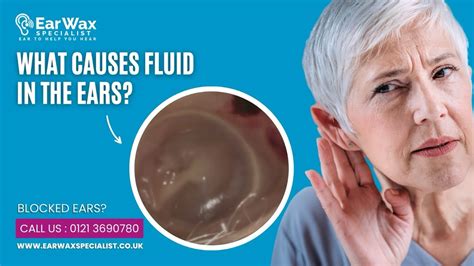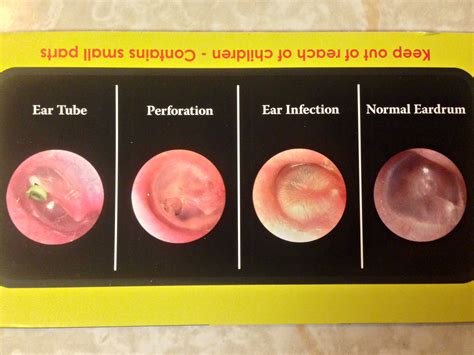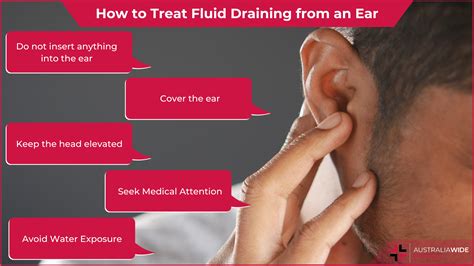Intro
Discover 5 ways to fix fluid ear, alleviating ear fullness and hearing issues with natural remedies, ear drops, and professional treatments, addressing middle ear problems and Eustachian tube dysfunction for optimal ear health.
The feeling of having a fluid ear, also known as otitis media with effusion, can be quite uncomfortable and frustrating. It's a condition where fluid accumulates in the middle ear, causing a range of symptoms including hearing loss, ear fullness, and discomfort. If you're experiencing these symptoms, it's essential to understand the causes and explore the various treatment options available. In this article, we'll delve into the world of fluid ear, discussing its causes, symptoms, and most importantly, the ways to fix it.
The middle ear is a small, air-filled space that contains three tiny bones responsible for transmitting sound vibrations to the inner ear. When the Eustachian tube, which connects the middle ear to the back of the throat, becomes blocked or doesn't function correctly, fluid can build up in the middle ear. This can be due to a cold, allergies, sinus infection, or even a change in air pressure. The accumulated fluid can cause the eardrum to become inflamed, leading to the symptoms associated with fluid ear.
Understanding the causes and symptoms of fluid ear is crucial in finding the right treatment. Some people may experience mild symptoms, while others may have more severe cases that can affect their daily lives. It's essential to consult a healthcare professional for a proper diagnosis and to discuss the best course of treatment. They may use a tympanometer to measure the movement of the eardrum and check for any signs of fluid buildup. With a proper diagnosis, you can start exploring the various ways to fix fluid ear and alleviate its symptoms.
Introduction to Fluid Ear Treatment

Understanding the Treatment Options
The treatment options for fluid ear can be broadly categorized into conservative management, medical therapy, and surgical interventions. Conservative management involves watchful waiting, where the healthcare professional monitors the condition to see if it resolves on its own. Medical therapy may include the use of antibiotics, decongestants, or nasal steroids to help alleviate symptoms. Surgical interventions, such as the insertion of ear tubes, may be necessary in more severe cases or when other treatments have failed.5 Ways to Fix Fluid Ear

- Watchful Waiting: In some cases, the fluid in the middle ear may resolve on its own. Watchful waiting involves monitoring the condition to see if it improves over time. This approach is often recommended for children, as their Eustachian tubes are smaller and more prone to blockages.
- Nasal Decongestants: Nasal decongestants can help alleviate congestion and reduce the amount of fluid in the middle ear. These medications can be taken orally or used as a nasal spray. However, it's essential to use them only as directed and for a limited period, as prolonged use can lead to rebound congestion.
- Antibiotics: If the fluid ear is caused by a bacterial infection, antibiotics may be prescribed to help clear up the infection. However, antibiotics are not effective against viral infections, and their use should be judicious to avoid contributing to antibiotic resistance.
- Ear Tubes: Ear tubes, also known as tympanostomy tubes, are small tubes inserted into the eardrum to drain the fluid from the middle ear. This surgical procedure is often recommended for children who have recurring ear infections or persistent fluid buildup.
- Autoinsufflation: Autoinsufflation is a technique that involves blowing air into the nose while pinching the nostrils shut. This can help open up the Eustachian tube and allow air to enter the middle ear, reducing the amount of fluid. This technique can be done at home and is often recommended as a first-line treatment for fluid ear.
Preventing Fluid Ear
Preventing fluid ear is often easier than treating it. There are several steps you can take to reduce your risk of developing fluid ear, including: * Getting vaccinated against the flu and pneumococcal disease * Avoiding close contact with people who have colds or other respiratory infections * Not smoking and avoiding secondhand smoke * Keeping your allergies under control * Avoiding sudden changes in air pressureLiving with Fluid Ear

Coping with the Symptoms
Coping with the symptoms of fluid ear requires a combination of medical treatment and self-care strategies. Some ways to manage symptoms include: * Using earplugs or earmuffs to protect your ears from loud noises * Avoiding sudden changes in air pressure * Elevating your head while sleeping to reduce congestion * Using a humidifier to add moisture to the air and reduce congestion * Avoiding close contact with people who have colds or other respiratory infectionsConclusion and Next Steps

If you're experiencing symptoms of fluid ear, don't hesitate to reach out to a healthcare professional for guidance and support. With the right treatment and self-care strategies, you can take control of your condition and improve your quality of life. Share your experiences and tips for managing fluid ear in the comments below, and don't forget to share this article with anyone who may be struggling with this condition.
What are the symptoms of fluid ear?
+The symptoms of fluid ear include hearing loss, ear fullness, discomfort, and a feeling of pressure in the ear.
How is fluid ear diagnosed?
+Fluid ear is diagnosed using a tympanometer to measure the movement of the eardrum and check for any signs of fluid buildup.
Can fluid ear be prevented?
+Yes, fluid ear can be prevented by getting vaccinated against the flu and pneumococcal disease, avoiding close contact with people who have colds or other respiratory infections, and not smoking.
What are the treatment options for fluid ear?
+The treatment options for fluid ear include watchful waiting, nasal decongestants, antibiotics, ear tubes, and autoinsufflation.
How long does it take to recover from fluid ear?
+The recovery time for fluid ear varies depending on the severity of the condition and the treatment approach. In some cases, the fluid may resolve on its own within a few weeks, while in other cases, medical intervention may be necessary.
